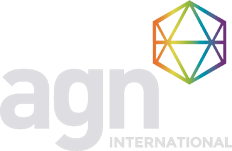The coronavirus pandemic upend work for millions of employees, and these changes might be permanent for many of them. According to a survey conducted by Gartner*, eight out of 10 business leaders said they will allow employees to work remotely from home on at least a part-time basis even after the pandemic ends. Nearly half (47%) said they will allow employees to work remotely from home on a full-time basis after the pandemic, grant employees flex days (43%) and provide flex hours (42%).
If you are among the businesses that have expanded remote work during the pandemic (and you plan to keep things this way), now is a good time to evaluate your technology infrastructure and optimize remote work capabilities. With technology evolving at a rapid pace, optimization must be an ongoing process. Making sure remote workers are optimized is a priority that you cannot afford to ignore.
By modernizing your systems, your business is better equipped to accommodate increased bandwidth usage, which enables employees to be agile so they can see around corners to challenges that lie ahead. Modernization also includes the adoption of new policies and expectations that cultivate a winning and supportive culture for remote workers. As business and employee needs change, the infrastructure supporting them should evolve as well.
To remain competitive, your organization will need to continue to look for ways to invest in sustainable and secure infrastructure as well as updated and flexible cultural norms that keep employees engaged.
Here are some steps you can implement to modernize your remote workforce:
Commit to Ongoing Network Infrastructure Updates
Network traffic is not likely to decrease, so keeping your network infrastructure updated and secure is a commitment that cannot go unfulfilled. You’ll need to create both short- and long-term strategies to ensure that your systems are sustainable and secure well into the future.
Understand Your Network Traffic
If your system isn’t prepared to handle the higher traffic level, you are likely opening your business up to additional security vulnerabilities. In the rush to maintain business continuity during the pandemic, some companies resorted to installing VPN solutions on personal devices – this changed their risk profile considerably. The last thing you want is staff attempting their own patchwork solutions to get work done.
Routinely evaluating your organization’s VPN is always a good idea. Be sure to monitor applications, users and content. You’ll need to understand the number of remote connections within your organization as well as the risk profiles associated with the devices used to access your network. With a clear understanding of your network traffic, you can increase the capacity of your VPN to facilitate better productivity, protect your business from security threats and ensure business continuity.
Consider Cloud-based Solutions
The cloud offers some good solutions for scaling increased network traffic and can be used in tandem with VPN updates. You may end up paying a little more, but the investment will provide several rewards, including the peace of mind that comes with built-in security and dedicated technical support. By understanding your traffic and its usage levels, you can leverage the cloud for extra capacity, using only what you need.
Encourage Relationships
Having an engaged workforce is key to a successful remote strategy. Remote work can make spontaneous collaboration among team members more challenging. Invest in tools they can use to boost collaboration, morale and productivity to get the results you’re looking for. Platforms such as Zoom and Microsoft Teams can help, as well as many others.
Whatever you choose, make sure to clearly define guidance, rules and policies, as well as train employees on etiquette while using these new platforms so staff can collaborate and contribute to their fullest potential. Improving your employees’ experience when using the tools for remote work is a great way to keep them engaged, and high employee engagement leads to better organizational outcomes.
Begin strategizing now! The team at Froehling Anderson can provide guidance on a remote work strategy that fits your organization.


